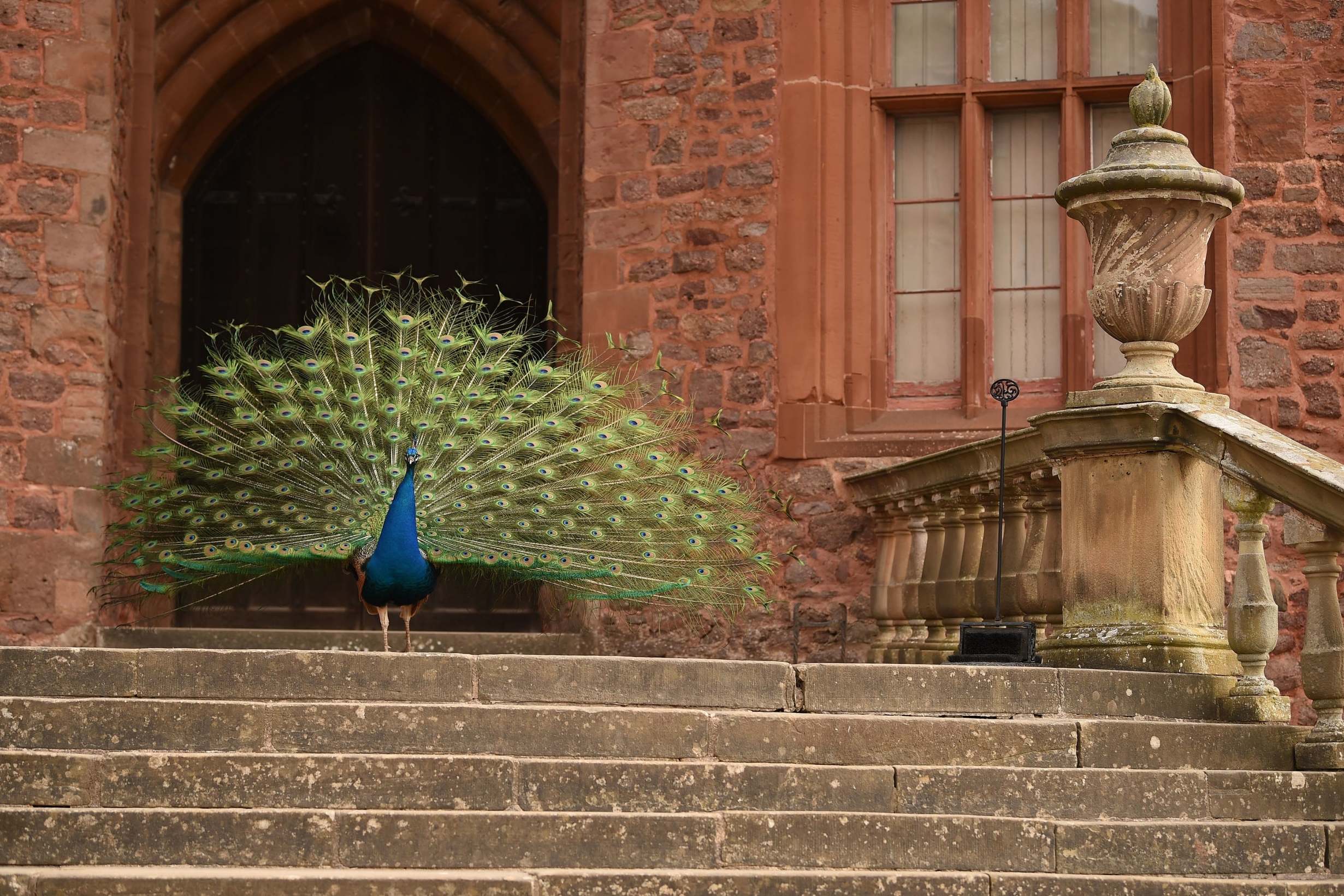How peacock feathers and butterfly wings have inspired a new generation of earthquake sensors
'Whereas nature has developed these materials over millions of years we are slowly catching up in a much shorter period', researcher says

It is a technology built into the very fabric of butterfly wings and peacock feathers - now scientists are hoping a new approach to creating colour changing crystals could help to keep us to keep on top of hand washing regimes, check our food is safe to eat and even predict earthquakes.
An international team of scientists led by researchers from the universities of Surrey and Sussex has developed photonic crystals capable of changing colour when exposed changes in temperature, light, strain and other outside forces.
With changes that can be seen with the naked eye the intensely green crystal can change colour to blue when stretched or turn transparent after being heated - with potential ramifications for healthcare, food safety and security systems like fingerprint scanners, according to the study published in the journal Advanced Functional Materials.
Alan Dalton, Professor Of Experimental Physics at the University of Sussex's School of Mathematical and Physical Sciences, said the research was spurred on by the way colour is created in the bodies of some birds and insects.
While some colours in nature are created by pigmentation, others are produced by the way the light hits the microscopic structure of a material - like the wings of butterflies.
"Our research here has taken inspiration from the amazing biomimicry abilities in butterfly wings, peacock feathers and beetle shells where the colour comes from structure and not from pigments” Professor Dalton said.
“Whereas nature has developed these materials over millions of years we are slowly catching up in a much shorter period."
Scientists now hope that by tweaking the structure of the crystals - made using a tiny amount of the relatively cheap to produce carbon-based material, graphene - they will be able to use the colour changing material as a sensor.
It is thought the material could prove useful in the creation of intelligent packaging for food and drink, capable of telling a customer if the product has passed its sell-by date or ever reached an undesirably high or low temperature.
And the crystal’s response to pressure makes them effective in anti-counterfeiting measures and biometric applications - revealing fingerprints with high precision. In addition the sensors could be used in a wrist band to indicate if a healthcare worker has washed their hands before entering an examination room to ensure hygiene.
Dr. Izabela Jurewicz, Lecturer in Soft Matter Physics at the University of Surrey's Faculty of Engineering and Physical Sciences, said "While these crystals are beautiful to look at, we're also very excited about the huge impact they could make to people's lives."
Join our commenting forum
Join thought-provoking conversations, follow other Independent readers and see their replies
4Comments